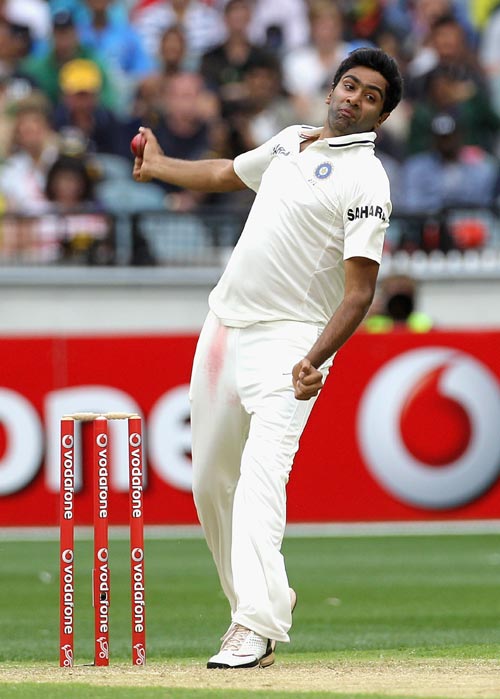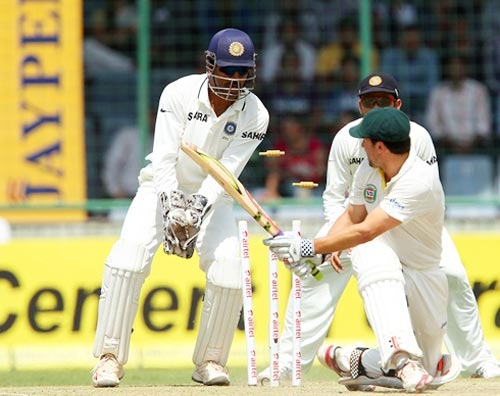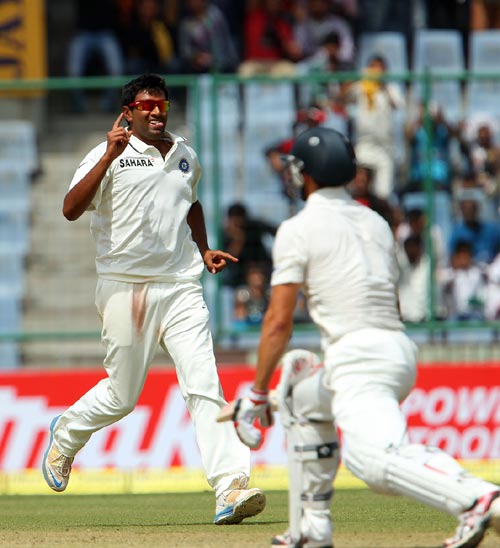 | « Back to article | Print this article |
It's Ashwin's turn again at Kotla
Ravichandran Ashwin made most of helpful conditions and finished with wonderful figures of four for 40 as Australia struggled to 231 for eight after electing to bat in the fourth Test.
R Ashwin started with two five-wicket hauls in the first Test against Australia in Chennai and hasn't looked back since.
On Friday, he made most of helpful conditions at the Feroz Shah Kotla in Delhi to leave Australia in a mess by the end of Day 1 in the fourth and final Test, finishing with wonderful figures of four for 40 as Australia struggled to 231 for eight after electing to bat.
The Chennai off-spinner has proved a big thorn in the Aussies' flesh this series, already accounting for 26 wickets thus far.
Smart wicket of Cowan
Ashwin showed great acumen to claim the wicket of Ed Cowan. He set the batsman up perfectly, intelligently forcing him to sweep across the line, which ultimately caused his downfall.
He was lucky to get his second wicket of the day -- that of Matthew Wade, who was caught at silly point although replays later showed that the ball had gone off the pads and did not hit the bat at all.
Ashwin must have relished the wicket of Mitchell Johnson, whom he got with his trademark carom ball delivery. The left-hander offered no shot to a ball outside the off-stump, and could only see it spin back and break his stumps.Assistance from wicket
In fact, he waited for a few seconds in disbelief wondering how he was dismissed.
Ashwin's fourth wicket was perhaps the most important of the day. Smith played a patient innings of 46 from 145 balls and, along with Peter Siddle, frustrated the Indians.
The right-hander took a couple of steps down and tried to defend but the ball turned a bit and took the inside edge on to the pads. Ajinkya Rahane, at short leg, held the offering.
Besides bagging those wickets, Ashwin was also economical, conceding just 40 runs in 30 overs.
There were a lot of cracks on the pitch and he showed great maturity to keep it simple and exploit the surface.
"You have to be very careful if there is assistance first of all, because if there is assistance you have to be much more on the spot and not really worry too much about doing from your hand.
"You have to be even more careful, the margin for error is very less if there is quite a bit of assistance from the wicket," he said.

